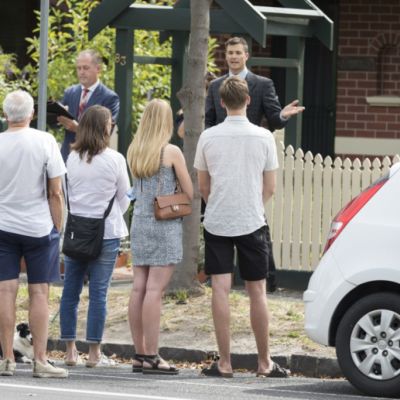Millennial and Gen Z buyers dominate the granny flat market
Foldable houses have taken off as an affordable pick for first-home buyers.
The dwellings, which fold out from a compact, transportable shape, are being erected in mum and dad’ backyards, at about $136,000 for four bedrooms.
Millennial and Gen Z buyers now dominate the granny flat market.

New South Wales-based company VanHomes has noted a spike in customers who are property debutants and priced out of traditional bricks and mortar.
The clientele used to be older downsizers, VanHomes founder Vito Russo says, but that has changed as the market has become tougher to break into, rents have soared and deposits ballooned.
Russo’s expandable, moveable properties come in three sizes – studio suite, and single and double” expanding suites”. The smallest starts at $36,800 for a studio (dependent on state and location), and rise to about $136,000 for the four-bedroom configuration.
Buyers can also select a “cleanskin”, to design their own.

The properties do not require a permit if placed in a backyard as an adjunct to an existing dwelling, along the lines of a granny flat, Russo explains. If they are set solo on vacant land, council approvals are required.
Generational needs have been flipped by the housing crisis.
“When I started the company in 2008, the majority of our customers were elderly people, they were downsizing, and the van home was an alternative to going into a retirement village,” Russo says.
“They would put them in their adult kids’ backyard, so their adult kids could look after them.
“Now the younger generation are finding it hard to get into the housing market and to even find something to rent, so they purchase the van homes and put them in their parents’ backyards.”

VanHomes is based in Berkeley Vale, on the NSW central coast, but has transported the folding dwellings as far as Broome in Western Australia. They have also loaded one onto the Spirit of Tasmania ferry, for a client in the Apple Isle.
Russo says they are appealing to first-home buyers for price and speed. They take less than a day to set up, versus many months, and blown out delays, for other construction methods.
Russo says permit rules and legislative requiremeents for these homes differ from state to state. He believes streaming planning laws would open up options for young buyers.
They are considered caravans and this provides hurdles in some jurisdictions.
“The demand is increasing, as housing affordability gets harder and harder,” he says. “Definitely we could be providing a lot more if councils in other states had a more open approach to van homes. States vary, from council to council – they view our type of home as a caravan.

“Councils and state governments do have to take the housing crisis seriously and be more open to this alternative type of housing.”
Fresh data shows the number of first-home buyers in Australia has fallen.
The overall value of home loans rose slightly in August. However, that uptick in activity “masks” the worrying trend of fewer debutant buyers in the market, according to the Real Estate Institute of Australia.
The value of new loan commitments in August lifted by 1 per cent, to hit $30.38 billion, the latest from the Australian Bureau of Statistics reveals.
However, at the same time, the number of first-home buyers taking out mortgages dropped by 1.5 per cent, showing young Aussies are not those participating in the loan spike.
We recommend
States
Capital Cities
Capital Cities - Rentals
Popular Areas
Allhomes
More










